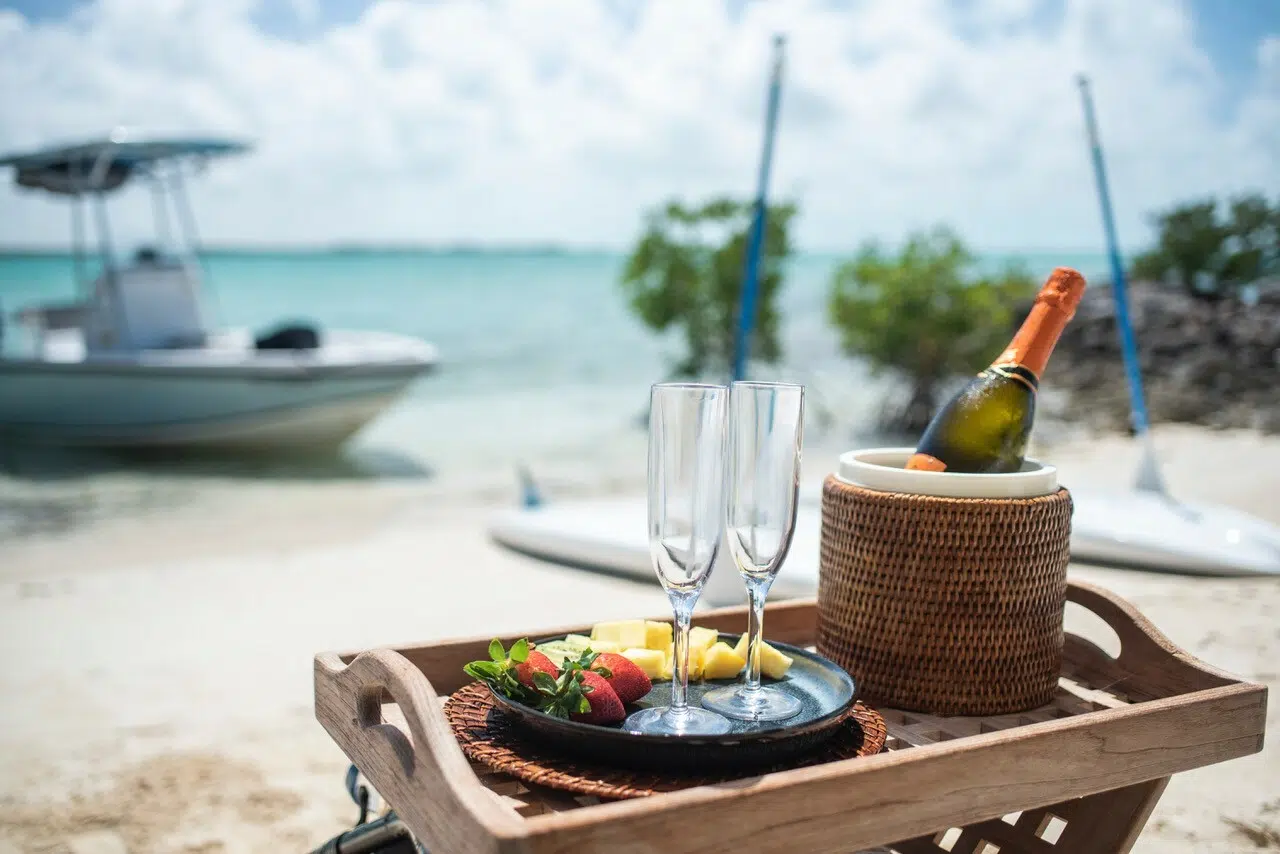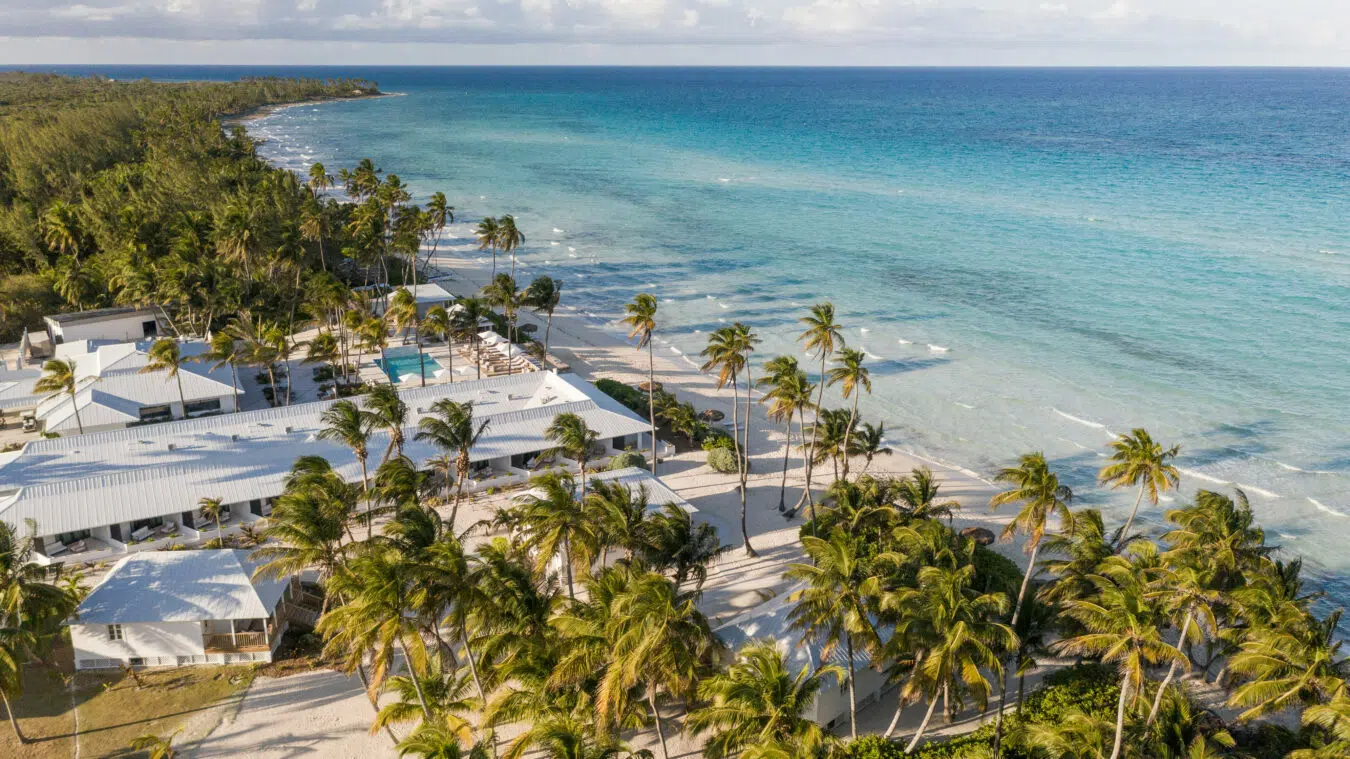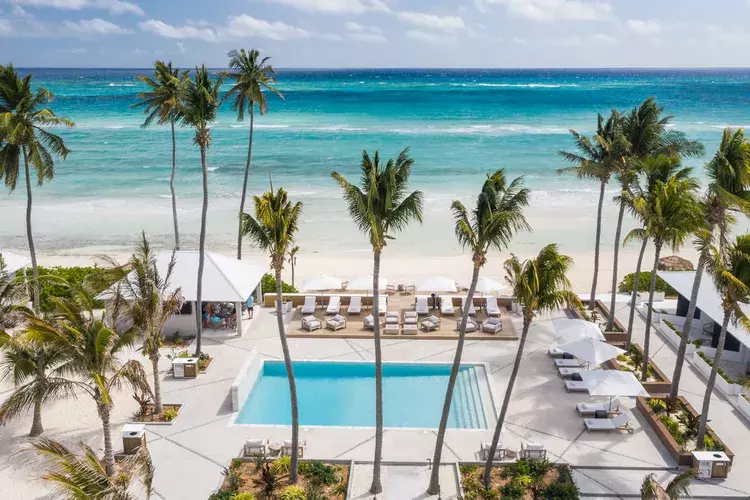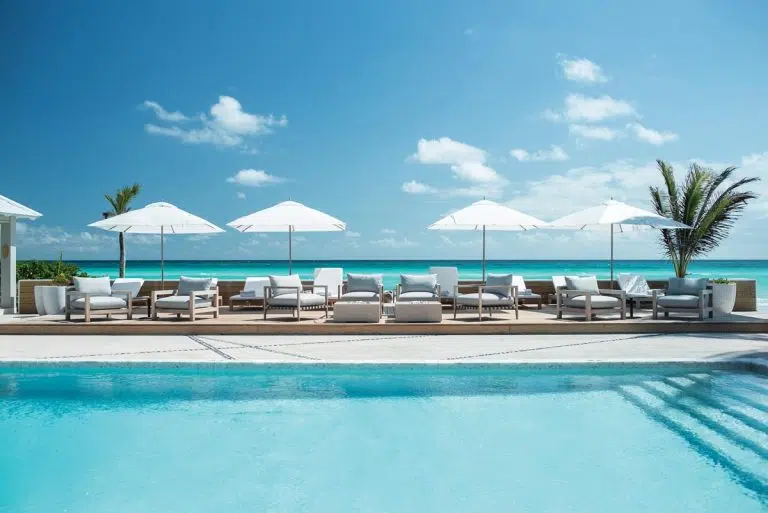
CMC Featured On Boat International
The Bahamas is having a moment. Granted, the 700-island country – with its clear blue waters, fruitful fishing and welcoming culture – has never been out of style, but when it came to yachting, the conventional
wisdom was it was a winter destination for smaller, shallow draft vessels. Not anymore.
“I would say within the past four years, the change in the yachting industry there is dramatic like you cannot believe,” says Peter Vazquez, an American who’s been entrenched in Bahamas yachting since 2003, and prior to that in the aviation field. He and his wife and business partner, Kim, both captains, own the charter yacht Island Time and manage a fleet of charter yachts based in Nassau. In addition, they purchased Leaf Cay in the Exumas just over a decade ago.
In 2003, he ran one of only two charter yachts, both 115ft, that spent the summer in the Exumas. When he bought the 110ft Island Time in 2007 it was one of the larger yachts there. More recently, as he was piloting his plane from Nassau to Staniel Cay, he counted eight yachts of at least 250ft.
“Can you imagine a flyover in 2003 – there were two of us. Now it’s filled with gigayachts!” Vasquez says.
If you need further proof, the 384ft Oceanco Infinity – which briefly held the title for the Netherlands’
largest yacht after her launch in 2022 – was spotted in the Exuma cays in May this year.
So, what happened? Vazquez points to the Covid-19 pandemic as the tipping point.
Joe Dargavage, a partner in Romora Bay Resort and Marina on trendy Harbour Island and a past president of the Association of Bahamas Marinas, explains: “The Bahamas is one of the few countries anywhere in the world that did not shut down. It was actually because of yachting. A group of marina owners, including myself and the Association of Bahamas Marinas, got together with the Bahamian government to help create the health visa system with the Ministry of Tourism.”
Once yacht guests passed the system’s testing requirements, they could easily island-hop throughout the Bahamas, when alternatives such as the popular BVIS were closed, and cruising between any open Caribbean nations was rife with red tape.
“During Covid, almost every large superyacht in the world was in the Bahamas,” Dargavage says. “We never had so many boats.” And they haven’t left. “The marinas have never been as busy as they are right now,” he says, adding that the notion that large yachts can’t navigate Bahamas waters is a myth that’s been thoroughly debunked.
There are certainly places where shallow draft is advantageous; you wouldn’t negotiate the ominous-sounding Devil’s Backbone reef into Harbour Island with more than 10ft beneath you, for instance. But industrious captains have forged routes through natural channels that can handle their drafts of 15ft – routes that Captain Joe Jorlett calls a “tightrope,” narrow, but tried and true. “It’s no problem at all. Some superyachts will even travel at night on those routes. They’re very, very trusted,” he says.
Improved sea floor mapping has helped. “Today, we have such technology that every inch is mapped; we have more technology today in an iPhone than the bridge of a 150ft boat had only 10 years ago,” Dargavage points out.
“Many of our marinas aren’t built necessarily for superyachts,” he acknowledges. “But we have such great anchorages, including in Harbour Island. A quarter-mile away we have an anchorage at the south cut where a vessel up to 270ft can anchor, then, on the other side of Egg Island and Spanish Wells, we put our bigger vessels, anything above 300ft, the Bravo Eugenias of the world, and (322ft) Aviva.”
Aviva’s owner, Joe Lewis, also has a land stake in the country. He is principal of the Tavistock Group, which
developed Albany on New Providence Island. The 600-acre luxury resort club that opened in 2010 includes a marina able to host yachts up to 250ft.
“Albany Marina has been a terrific asset for large boats desiring to visit the Bahamas, but the totality of Albany as a resort destination – with championship golf, numerous pools and restaurants, a racquet center and more-has really propelled and allowed [this part of] the Bahamas to emerge as a mooring destination for the world’s great megayachts, which had previously only been seen in the South of France,” says Christopher Anand, managing partner of Albany. What made the Albany investment attractive, he says, was the stable government, its proximity to the US, the well-educated population known for hospitality and its accessibility by boat and plane from multiple destinations.
Indeed, the Bahamas has never had a problem attracting foreign investment. The issue has been balancing the demand for development and jobs in a tourism-reliant economy with the need to preserve the natural beauty that attracts tourists in the first place. The government has been notoriously turtle-like to green light new developments. The process historically has taken between one and five years as developers navigate layers of approvals from various agencies.
After Peter and Kim Vazquez purchased Leaf Cay – chronicled on HGTV’s show Island Hunters – their financial backers were expecting the approval process to take six months, Vazquez says. When it stretched into two-and-a-half years, they lost faith and pulled out.
Vazquez persisted and Leaf Cay became the first project in the Bahamas to be permitted to build over-the-water bungalows. It took coming up with a 100-year plan for hurricanes, commissioning the French architect responsible for many Bora Bora bungalows, a construction plan that minimized the impact on site and some geographic luck, in that the bungalows would enjoy 360-degree protection in shallow water. Vazquez is currently torn between selling (the freehold-title island is on the market) and finding the right partner to do the build-out.
Since Leaf Cay set the precedent, other developments with over-the-water accommodation proposals have been looked upon more favorably, and the government has issued more approvals.
“The Bahamas is in a very pro-development mode right now,” Vazquez says. Marine projects encompass everything from three new cruise ship ports to several superyacht marinas. In his neck of the woods alone, a marina for yachts up to 210ft recently opened on Norman’s Cay; on Cave Cay there has been conditional approval to build a $550 million luxury resort, which includes a 98-slip marina; and developments are underway on both Little Sampson and Big Sampson Cays.
“It’s a double-edged sword. We’re going to have a tremendous amount of great business for the locals, for the economy. But, on the other hand, we’re going to miss the days where we would drop the hook over by Staniel Cay and be one of three people inside Thunderball cave,” Vazquez says.
Just north of Staniel Cay is the Exuma Cays Land & Sea Park, the country’s first national park, established in 1958 and maintained by the Bahamas National Trust (BNT), which currently oversees 2.2 million acres of national parks. Development is prohibited within them to nurture breeding grounds for marine wildlife, and yachts must abide by strict rules and regulations. For instance, setting up a beach barbecue within the Exuma park costs $1,100. “These types of beach set-ups could take a toll on the environment, so we have it at a high price to more or less discourage the frequency of it,” park manager Bradley Rutherford says.
“There is definitely a balance that needs to be maintained,” he adds. “We’re going to have to have discussions as the numbers and frequency of megayachts begin to increase. We obviously don’t want to get too overused [to the point where] sustainability is going to be threatened.”
Yet Rutherford also feels visitors to the Exuma park understand what they are trying to accomplish. “From the very smallest vessels to the bigger ones, that respect is present,” he says. “A lot of the crew and captains are very mindful of the rules. And they take on a certain stewardship as well. They realize that for it to be sustainable they must do their part.”
That mentality seems to be part of a rising trend of tourists with an eco-conscience – which bodes well for the country as it gets busier. It’s something Bryan Baeumler, owner of Caerula Mar on South Andros Island, has noticed.
“Bahamas tourism is ever-growing, but we have seen an increased interest from tourists who are aware of their carbon footprint and are respectful of the environment and cultures they are visiting,” he says.
He and his wife, Sarah, developed the luxury boutique resort as the world watched over four seasons of HGTV’s Renovation Island. Set on South Andros, a marshy island of dense mangroves that’s only sparsely dotted with tourist offerings along its east coast, the property embraces sustainable materials and native vegetation, partially relies on solar power and is plastic-free. “We were inspired to create a resort that paid homage to the natural beauty and the serenity of its surroundings,” Sarah says. “We want our guests to enjoy all that the island has to offer while respecting the ecology and environment,” Bryan adds. The low-impact ways their guests experience the island range from bike rides and blue hole cave dives to private picnics and bush medicine tours.
It’s the type of investment that John Pinder, parliamentary secretary to the Ministry of Tourism, Investments and Aviation, welcomes. “As we grow our tourism product, sustainability and eco-friendly investments are at the top of my priorities,” he says.
“Eco friendly” is easier said than done when you consider that the many private islands must provide their own power, water treatment and trash disposal.
A case in point is Walker’s Cay, the country’s northernmost island. It’s currently being revived by yacht owner Carl Allen, who has fond memories of fishing there as a child. The sportfishing Mecca was abandoned in 2004 after Hurricanes Frances and Jeanne did a number on the hotel and marina. Allen bought the island in 2018 with plans to return it to its former glory. But how to do this without affecting the delicate ecosystem?
“Not a day goes by that I don’t ponder that question,” Allen admits. “This island, in particular, has been sitting here dormant and it’s good and bad. It’s good because everything has come alive again, there are fish everywhere, the reef is magnificent. It’s bad because on the island [nearby] – there are 700 people there roughly – everybody is really hurting for jobs, for money, for anything they can do. And so I have that challenge of bringing the economy back here in the northern Bahamas – the gateway, as one prime minister called it – and not messing up the environment.”
Currently Walker’s Cay marina is open with 80 slips within state-of-the-art floating docks suitable for up to 250ft LOA, and Allen hopes that the first land accommodations will be available towards the end of 2023. At the time of writing, the cay was hosting its third annual blue marlin tournament.
“What I’m trying to do with Walker’s is make it sort of a microcosm of what I believe the whole Bahamas can look like,” Allen says. To that end, he is equipping the island with an LNG turbine engine for power that cuts emissions by 90 percent and a full-scale water treatment plant to protect the reef. “The treatment plant is costing me a fortune but it’s everything. I don’t want any phosphorus or anything going into water here; nothing but clean, fresh water will come off this island.”
He’s also looking at ways to manage trash so as not to use the landfill on a neighboring island, and here, he has some professional expertise. “I come from the world of trash. There are several incinerators that you can buy today that are very clean. Whatever [we choose], it’s going to be the best that we can do.”
Something else that bodes well is the fact that the Bahamas is big. Drawing a straight line from the top of Walker’s Cay to the southernmost island of Inagua, it stretches close to 500 nautical miles. As Captain Jorlett puts it, “there are plenty of islands to go around.”
“There’s a lot more to the Bahamas than what people normally envision,” Pinder says. While the Exumas, Abacos, Nassau and Harbour Island tend to get the most attention, there is virgin cruising territory in the south from Cat Island to Inagua, where there are few to no plans for large-scale development. In addition, the BNT’s goal is to grow the protected parks throughout the Bahamas.
Pinder shares that the government is in negotiations for some small marinas, particularly in Crooked Island, but for the most part it’s an anchoring situation down south, especially for yachts larger than 120ft. “We want to make it more of a boutique experience,” he says. “We want people to absorb what it is to be Bahamian and to immerse in the culture and speak with Bahamians; let them tell you what their favorite fishing spot is, where they get the best diving experience and blue holes.”
The farther south you go, the less developed it is. Allen calls it a “pristine wilderness.” He likes to explore uninhabited Hogsty atoll – a rare formation in the Atlantic – with his submarine. “It’s just so wild, like you’re on a different planet.” Another of his favorite spots is Hartford Cave on Rum Cay. Accessible only by boat, the cave is covered in ancient petroglyphs from the original Lucayan inhabitants.
The south is also where Pinder, an Abacos native, spends his vacations sailing. “You can head down into the untouched and unknown and anchor off a beach and see dolphins around you, turtles swimming and cast your line and catch your dinner for the night. Pick up one of our conch, and as you clean it to make conch salad, throw off the remnants and the stingrays will come up around you, run through your feet and give you a little massage.
“It’s actually good that there aren’t marinas down there,” he continues. “The southern Bahamas is still untouched, and we want to keep it special. So you can go down there and anchor out and feel like the world has faded away.”



